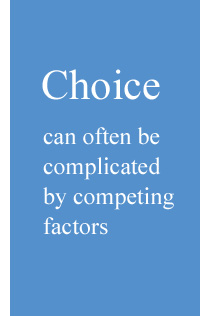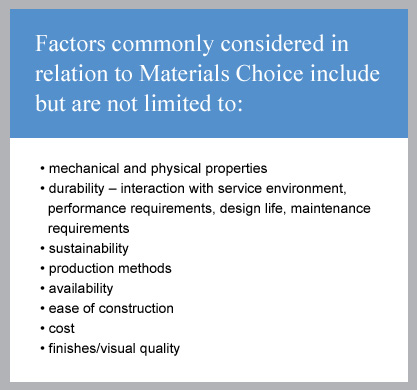Factors
Frequently, materials choice for a project is straightforward, with only one or two familiar factors to be considered such as are the mechanical properties adequate and is it cost effective? However, choice can often be complicated by other competing factors or so influenced by one factor that this dominates the decision.![]()
 For example, on a large rail project there was a requirement for acoustic barriers on a bridge deck and the client initially stated these should be maintenance free for 120 years. The designer chose a stainless steel but the client did not want to pay the premium; equally, the client did not want to accept a painted steel option as this would require maintenance every 20 or so years. Here the competing factors are initial cost versus future maintenance costs. In this case, we cannot make the decision it has to come from others but we can ensure that the choice is informed.
For example, on a large rail project there was a requirement for acoustic barriers on a bridge deck and the client initially stated these should be maintenance free for 120 years. The designer chose a stainless steel but the client did not want to pay the premium; equally, the client did not want to accept a painted steel option as this would require maintenance every 20 or so years. Here the competing factors are initial cost versus future maintenance costs. In this case, we cannot make the decision it has to come from others but we can ensure that the choice is informed.
In selecting materials we also have to be aware of the unusual and make sure any such factors are identified early in the design process. The following example considers a case where an uncommon factor dominates the decision making process. It shows that you must think about the ‘not always’ obvious issues that could influence materials choice.![]()
Example
Imagine the project you are working on is a new hospital, and you are planning the large reinforced concrete structure that will house an NMR scanning facility.

